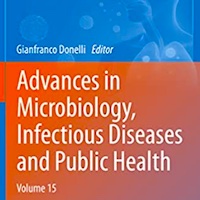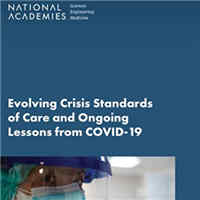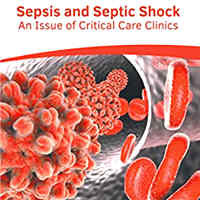Tag: infection
Marburg Virus Disease Outbreaks in Equatorial Guinea and Tanzania
The Centers for Disease Control and Prevention (CDC) is issuing this Health Alert Network (HAN) Health Advisory to inform clinicians and public health departments in the United States about two confirmed outbreaks of Marburg... read more
Antifungal Stewardship in Critically Ill Patients
Antifungal stewardship (AFS) can improve performance measures and decrease antifungal consumption, with no negative impact on outcomes. β-D-glucan (BDG) are helpful to stop unnecessary treatment in patients with IC,... read more
Regular Old Pneumonia Treatment Just Got Better
In 2020, COVID-19 pneumonia became so common that "old-fashioned" bacterial pneumonia suddenly seemed rare. They look very different on x-ray. See if you can spot the differences. A new study from France tipped the scales... read more
Optimal Bundle of Recommendations for Sepsis
The aim of this retrospective cohort study was to identify among the Surviving Sepsis Campaign (SSC) guidelines the optimal bundle of recommendations that minimize 28-day mortality. The bundle of six recommendations is... read more
PLASMIC Score Role in the Management of Thrombotic Thrombocytopenic Purpura
At centers that are resource-limited and where ADAMTS-13 testing is not readily available, it is imminent that treatment is started immediately based on the clinical presentation and PLASMIC score. A PLASMIC score can... read more
Advances in Microbiology, Infectious Diseases and Public Health: Volume 15
This book series focuses on current progress in the broad field of medical microbiology, and covers both basic and applied topics related to the study of microbes, their interactions with human and animals, and emerging issues... read more

Hospital Acquired Infections, Multidrug Resistant (MDR) Bacteria, Alternative Approaches to Antibiotic Therapy
Bacterial resistance to known and currently used antibiotics represents a growing issue worldwide. It poses a major problem in the treatment of infectious diseases in general and hospital-acquired infections in particular.... read more

COVID-19 Treatment Guidelines New Version Published
The COVID-19 Treatment Guidelines Panel (the Panel) is pleased to announce the publication of an updated version of the Coronavirus Disease 2019 (COVID-19) Treatment Guidelines. In the United States, the prevalence of... read more
Early Identification of Intra-abdominal Infection and Sepsis
This case report illustrates the ability of the novel biomarker pancreatic stone protein (PSP) concentrations to act as a warning sign, allowing the early identification of intra-abdominal infection and post-operative peritonitis... read more
China: Nearly 250 million people might be infected with COVID-19
According to a leaked government document that has been circulating on social media, it is estimated that up to 248 million people in China may have been infected with COVID-19 since control measures were lifted. This... read more
Clarifying the Fictions Surrounding Sepsis: Strategies for Improved Management and Outcomes
It is important to clarify the myths surrounding sepsis and to provide a clear understanding of the condition. This can help set realistic expectations about outcomes and inform effective strategies for managing sepsis, including... read more
Algorithm that Detects Sepsis Cut Deaths by 18%
Hospital patients are at risk of a number of life-threatening complications, especially sepsis—a condition that can kill within hours and contributes to one out of three in-hospital deaths in the U.S. Overworked doctors... read more
Septic Shock Developing Later During Hospital Stay Associated with Higher Mortality
In-hospital mortality continued to rise as admission-shock-onset-time increased in patients with septic shock. No clear dichotomization between early and late septic shock could be ascertained, and this categorization may... read more
Care Step Pathway an Effective Tool For Clinicians Caring for Mechanical Ventilated COVID-19 Patients
The Care Step Pathway (CSP) described in this article was developed to increase awareness of the potential association of SARS-CoV-2 infection with invasive fungal infections, particularly pulmonary aspergillosis. The... read more
Co-infection and ICU-acquired Infection in COVID-19 ICU Patients
In patients with severe COVID-19 in the first wave, co-infection at admission to ICU was relatively rare but antibiotic use was in substantial excess to that indication. ICU-AI were common and were significantly associated... read more
Trauma, Eighth Edition
Hailed by readers and reviewers for its expert authorship and high-yield clinical content, Trauma is unquestionably the field's definitive text. Enhanced by a full-color design and a high-quality atlas of anatomic drawings... read more

Postoperative Sepsis Infection Can Be Identified Using Gene Expression Signatures
Host biomarker signatures may be able to identify postoperative infection or sepsis up to three days in advance of clinical recognition. If validated in future studies, these signatures offer potential diagnostic utility... read more
Public Sepsis Awareness Campaigns Should Be Created Based on Local Data
Although public knowledge of sepsis and its mortality is generally low, some countries have high awareness and knowledge, and as such, any public awareness campaigns should be created based on local data. This will also... read more
Feelings of Strangeness in ICU Patients
After several weeks in the intensive care unit (ICU) following a lung infection, Mr Pol wakes up from a coma and gradually becomes aware of his situation. The healthcare team rejoice in the successful outcome of his extubation:... read more
Evolving Crisis Standards of Care and Ongoing Lessons from COVID-19
Crisis Standards of Care (CSC) inform decisions on medical care during a large-scale crisis such as a pandemic or natural disaster, eliminating the need to make these decisions at the bedside without protections or guidance.... read more

Temporal Trends and Hospital Variation in Time-to-Antibiotics Among Veterans Hospitalized with Sepsis
This cohort study across nationwide VA hospitals found that time-to-antibiotics for sepsis has declined over time. However, there remains significant variability in time-to-antibiotics not explained by patient characteristics,... read more
Sepsis and Septic Shock: An Issue of Critical Care Clinics
Shock is caused by the decreased flow of blood to the body tissues due to circulatory system related problems. Sepsis refers to a life-threatening condition where the body causes injury to its own organs and tissues in response... read more










